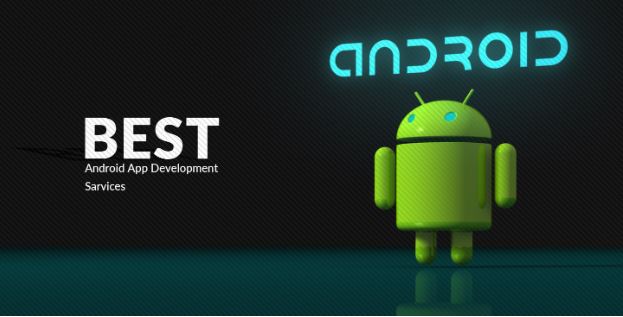Hey there, let’s take a journey into the exciting world of Android development! In this guide, we’ll dive deep into what Android development is all about, why it matters, how to get started, and what the future holds for this awesome field.
What is Android Development Anyway?
Think of Android development certification as the art of creating cool and useful apps for devices that run on Android, like smartphones and tablets. With so many of us using Android gadgets, this is where the magic happens!
Why Should You Care About Android Development?
Android phones and tablets are everywhere, so building apps for them is like opening a door to a gigantic crowd of potential users. This means you can share your cool ideas, make some bucks, and get a taste of fame by creating apps that people love.
Getting Your Tools Ready: Setting Up for Success
Before we start building, let’s set up your virtual workshop. Android Studio, the official toolkit, will be your best friend. It’s where you write, test, and perfect your app. Trust us, it’s like a superhero’s secret lair.
Talking in Code: Java and Kotlin Basics
Meet your new buddies: Java and Kotlin. They’re programming languages that help you talk to your app. You don’t need to be a coding guru, just a curious learner. And Kotlin? It’s like Java’s stylish cousin that makes your work easier and more fun.
In the world of Android development, staying abreast of the top coding languages is paramount. In our exploration of mobile apps, we understood the importance of mastering languages like Kotlin and Flutter. Discover why the top coding languages for mobile app development in 2024 are crucial for crafting cutting-edge Android experiences.
Building Blocks: Making Stuff with Activities, Fragments, and Views
Apps are like puzzles made of activities, fragments, and views. Activities are the different screens you see, like pages in a book. Fragments and views help you put the pieces together, making sure everything looks and works just right.
Making Things Look Pretty: Designing User Interfaces
Imagine your app is a painting and the user interface (UI) is the frame. UI is how your app looks and feels. By following some design rules, you’ll create a pleasant and user-friendly experience for your audience.
Moving Around: Exploring Different App Screens
Ever played hide and seek with apps? Intents help them find each other. They’re like messengers that let one app talk to another. Navigation components, on the other hand, are like maps guiding users from one screen to another.
Storing and Managing Data: The Lowdown on SQLite and Room
Apps deal with data – from usernames to high scores. SQLite is like a digital notebook where your app can jot things down. Room, meanwhile, helps organize the notes in a way that’s easy to find and read.
Connecting with the World: Networking and APIs
In a world connected by the internet, networking is the key. APIs (Application Programming Interfaces) act as bridges, letting your app talk to other apps or services. Think of them as translators at a global conference.
Adding Some Fun: Music, Pictures, and Videos in Your App
Who doesn’t like a bit of fun? Spice up your app by adding pictures, music, and videos. Libraries like Picasso and ExoPlayer make this as easy as pie.
Making Money with Your App: Different Ways to Earn
Your app’s a hit, but can it also be a money-spinner? Yes! In-app purchases, subscription models, showing ads – these are all ways you can cash in on your hard work.
Finding and Fixing Bugs: Testing and Making Your App Reliable
Nobody likes a buggy app. Testing is like trying out your creation to find its weak spots. Android Studio helps you catch those pesky bugs and makes sure your app works like a charm.
Speeding Things Up: Performance Optimization Tips
Ever used a slow app? It’s frustrating, right? Performance optimization ensures your app runs smoothly. From starting quickly to not hogging memory, we’ve got tips to make your app lightning-fast.
What’s New? A Look at Kotlin Coroutines and Jetpack Compose
Just when you thought you’ve seen it all, here come Kotlin Coroutines and Jetpack Compose. Kotlin Coroutines make things like multitasking a breeze, while Jetpack Compose is like the Picasso of app design.
The Future is Exciting: 5G, Foldable Phones, and More
Hold onto your hats, because the Android world is changing fast. With 5G networks speeding things up and foldable phones offering new possibilities, the future of Android development is brighter than ever.
Conclusion
So there you have it – a sneak peek into the thrilling world of Android development. From crafting beautiful interfaces to building smart functionalities, this field is a goldmine of opportunities. As technology continues to advance, Android development will keep evolving, offering you new ways to innovate and create.
FAQs
Q: How do I start with Android development?
A: First, get Android Studio and learn a bit of Java or Kotlin – you’ll be good to go!
Q: Can I use other languages for making Android apps?
A: While Java and Kotlin are the main ones, you can also try C++ or Python for specific cases.
Q: Why is Kotlin so popular for Android?
A: Kotlin is like a helpful friend that makes coding easier. It’s more modern and less complicated than some other languages.
Q: How can I test my app on different devices?
A: Android Studio has a cool tool called an emulator. It’s like having lots of different phones to test on without buying them all!
Q: What’s so special about Jetpack Compose?
A: Jetpack Compose is like a magic wand for designing your app’s look. It makes things easier and looks great!








